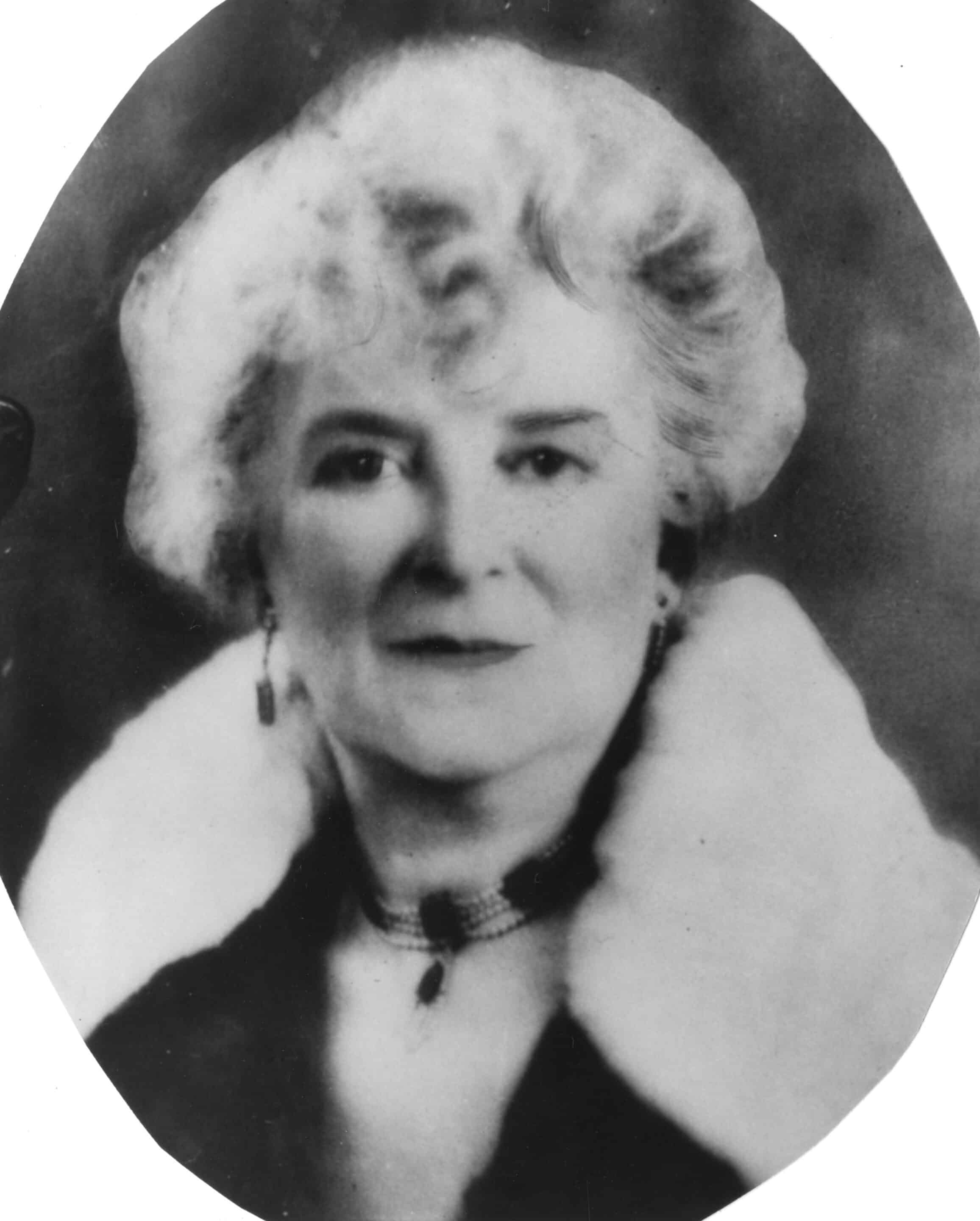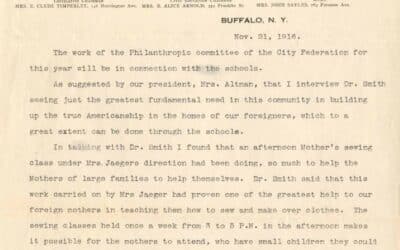People A-Z / Sadie Strauss Rayner Altman
Author, Social Reformer, Women’s Rights activist
1860-1936
Overview
Born in Baltimore in 1860 to Henry and Wilhelmina Strauss, Sadie had a privileged upbringing including bilingual education in Germany. As a child and teen she also experienced extensive periods of travel in Italy and France where she learned each spoken language.
Reared in music, art, literature and music, she contributed articles to the Baltimore American and defined herself as a journalist in an era when women were beginning to expand their roles beyond the private domestic sphere.
She married George W. Rayner, from another wealthy Baltimore family and together they had a daughter. Tragedy struck just two years later in 1884, however, when Rayner died suddenly. With their young daughter, Sadie Rayner travelled around Europe and met up with Henry Altman of Buffalo, whom she had met fleetingly as a child. They married a few years later in 1887 and created a blended family adding two more children to their extended family. After her second marriage, Sadie energetically pursued twin passions until her death: women’s societal advancement and civic engagement for the underprivileged, immigrants and military personnel. Her roles on civic boards and projects helped expand women’s work into public roles beyond those associated with the family.
Sadie Altman began her social service work in Buffalo under the auspices of her synagogue, in areas of immigrant aid that were seen as an extension of the domestic realm because the relief projects supported children, women and their families. Through the Sisterhood of Zion and Daughters of the Star, both Temple Beth Zion groups, she helped create and support a settlement style house on the East Side of Buffalo for incoming Jewish immigrants. This idea was initially proposed by Rabbi Israel Aaron, but run by the two all female Temple Beth Zion groups. The home met several needs. It gave access to English lessons and helped immigrant Jewish women learn work skills in the needle trades, especially sewing. It also provided educational and social activities for children who were the target of Christian missionaries on the East Side whose overarching purpose was to convert.
Through her work at Zion House she became involved with a broad network of other Buffalo Jewish women involved in the Buffalo Charity Organization Society, considered a leader nationally. As a writer and journalist in Baltimore, Sadie became actively involved in the Scribblers where she served as a President in 1898. The Scribblers formed in 1893 as a forum for women writers who wrote for the daily newspapers or wrote books, but were barred from press club membership because they were women. Later after the formation of the Buffalo City Federation of Women’s Clubs in 1905, she worked on multiple committees and served as its President during WWI.
From the teens through the 1920s, it was aid to serviceman and service women of WWI that formed the focus of her primary civic activities. She served on the draft board, the Red Cross, and Liberty Loan campaigns. With a women’s group, she supported enlisted men at Fort Porter when it was reactivated in 1917, as well as at the end of the war when it became U.S. General Hospital 4, for returning wounded. After WWI, she worked on the memorial committee of the American Legion. She represented local groups at the unveiling of the tomb of the Unknown Soldier at Arlington National Cemetery and supported the compilation of a history of Buffalo and Erie County in World War.
Sadie Strauss Rayner Altman is buried in Section FF at Forest Lawn Cemetery in Buffalo within the extensive Altman family plot that also includes Ann Holland Cohn.
Genealogy

Altman-Rayner Marriage Announcement: Henry Altman weds Sadie Rayner in Paris, France. Sunday Truth, Buffalo, New York, July 3, 1887.

“Altman Funeral to be Tomorrow,” Clipping, June 9, 1936.

“Mrs. Henry Altman Sr. Dies of Heart Attack: Funeral services to be held tomorrow for outstanding civic and club leader,” Clipping, June 9, 1936.
Books
- Daniel J. Sweeney, History of Buffalo and Erie County, 1914-1919. Committee of One Hundred, Finley H. Greene, chairman, under authority of the city of Buffalo, 1919. Sadie Altman is listed as one of the 21 cooperating editors on p. 754 of the printed version and on p. 765 on the online Haithi Trust version.

Articles and books that feature Sadie Altman
- Marta Albert, “Not Quite ‘A Quiet Revolution’: Jewish Women Reformers in Buffalo, New York, 1890-1914.” Shofar: An Interdisciplinary Journal of Jewish Studies, Volume 9, Number 4, Summer 1991, pp. 62-77.
- N. Osborn and E. Prostak, “Study of the Scribblers,” History 464, Research Library, Buffalo History Museum, December 16, 1972.
- Sadie Rayer Altman is listed in the Social Register, along with husband and two younger children. Social Register, Buffalo, Vol. 21, p.5.
- Henry Altman, in Henry Wayland Hill, Municipality of Buffalo, New York, A History, 1720-1923, Volume 4, p. 458. Sadie S. (Rayner) Altman is mentioned briefly in an entry about her husband.
- Columbia University, Catalogue, Register of Students, 1912-1913, p. 282. Sadie Rayer Altman is listed as a student at Columbia University, studying Social Economy.
- Jacob Rader Marcus, United States Jewry, 1776-1985, Vol. 3, The Germanic Period, Part 2, Wayne State University Press, 1993. Sadie Rayer Altman is mentioned by name in a section, “Club Women and Communal Workers.”
Sadie Altman does not have a collection of personal papers, but you can read about her in the collection of the Buffalo City Federation of Women’s Clubs, located at the Buffalo History Museum. Founded in 1905, Buffalo City Federation of Women’s Clubs was an alliance of member clubs involved in civic activities. The goals of the Federation of Women’s Clubs were “to further citizenship, education and philanthropy.” By 1985, the club had grown from the founding 28 clubs to 71-member clubs. These records are not online.
Gallery
Sadie Altman, Courtesy of the Buffalo History Museum, C92-02, IV G, Box 1, Folder 2.
Sadie Altman Portrait
Buffalo City Federation of Women's Clubs, Report 1916-11-21A-100. Courtesy of the Buffalo History Museum, Buffalo City Federation of Women's Clubs, Report 1916-11-21A-100.
Buffalo City Federation of Women’s Clubs Report
Our Thanks
Our thanks to Cynthia Van Ness at the Buffalo History Museum for her help in creating this profile entry.



